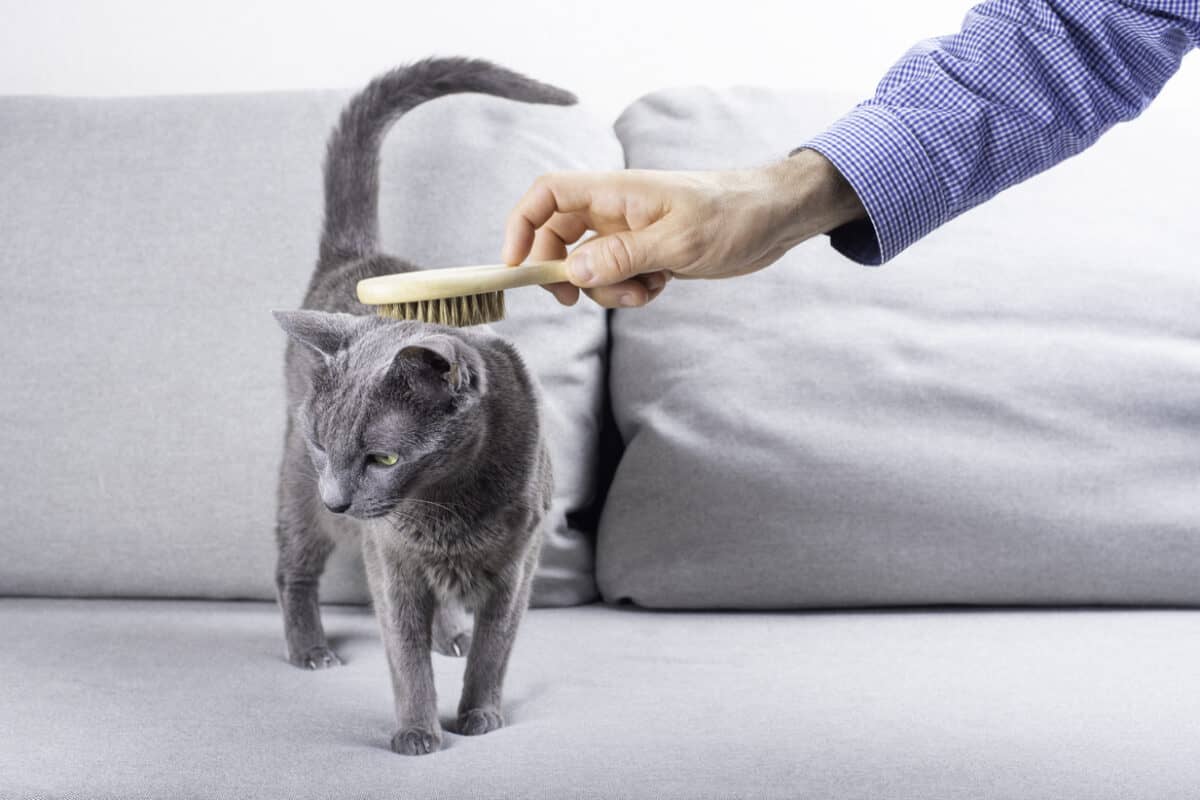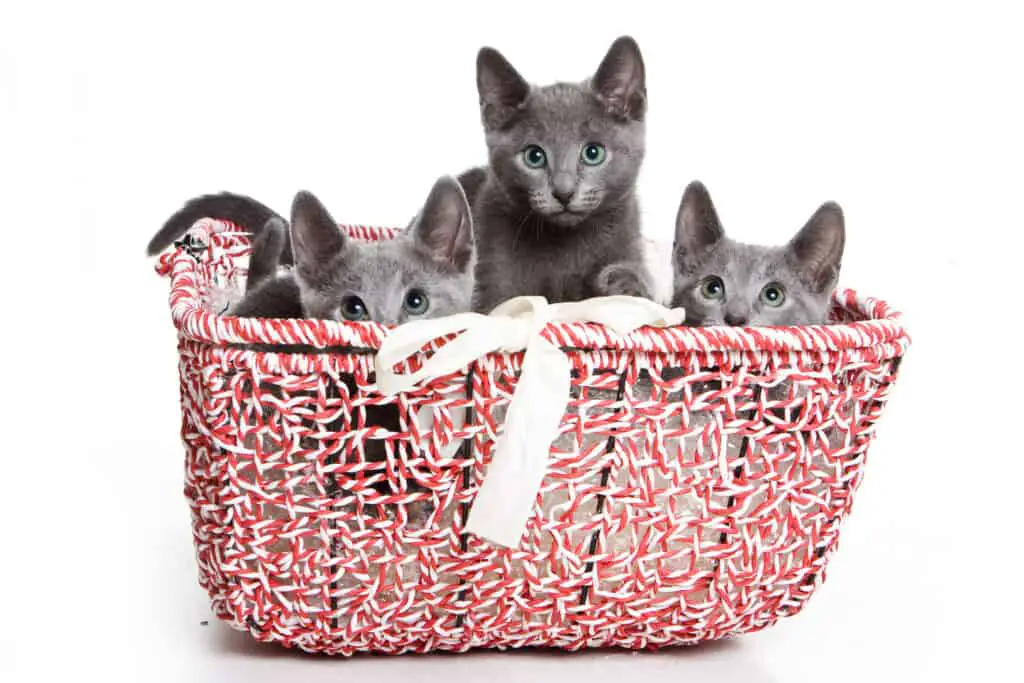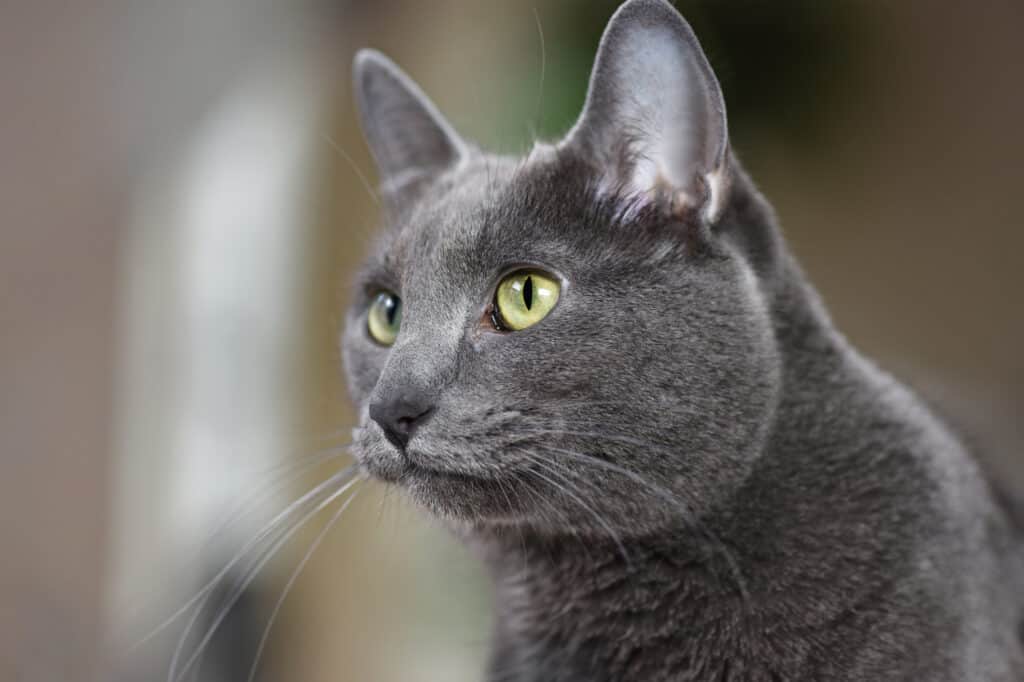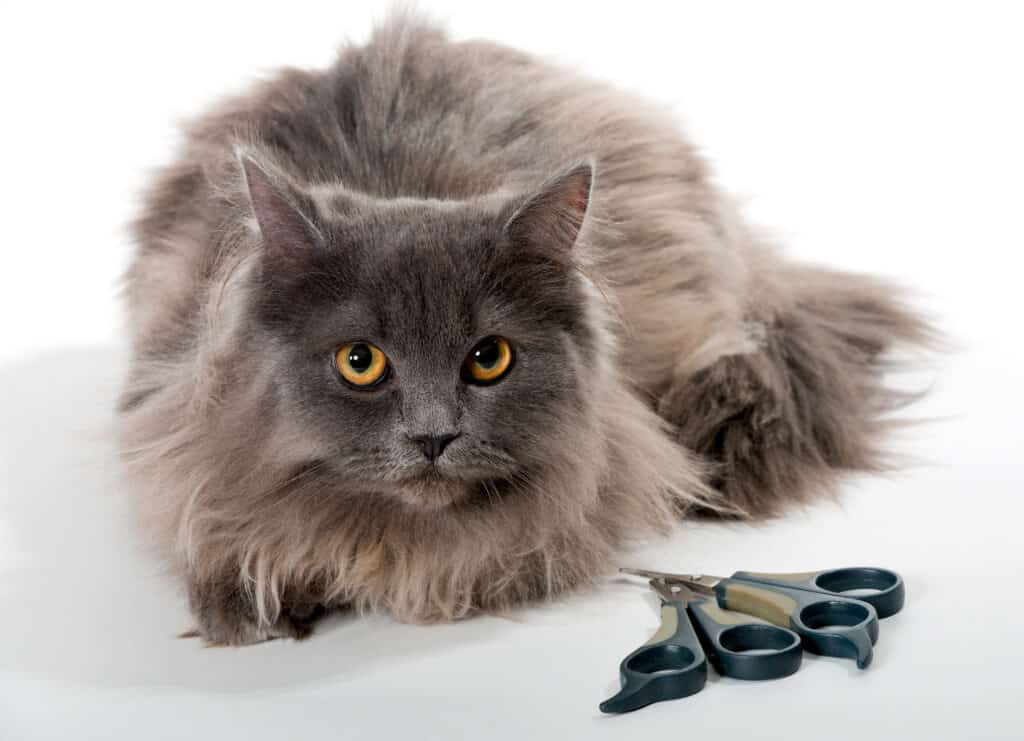Russian blues are a beautiful cat breed that is highly sought after for their luxurious and unique coat, friendly personality, and brilliant green eyes. But do Russian Blue cats shed a lot? With such a soft, plush coat, you may think so, but you’d be surprised at the answer!
Russian Blue cats do not shed as much as many other cats. They have relatively low-maintenance grooming needs and are not prone to tangles as they have shorter hair. However, some grooming maintenance is recommended to keep double-coated fur soft, silky, and plush.
Now you have your answer! But if you’re interested in discovering more about the Russian Blue’s unique fur, what a double coat is, and how best to maintain it, keep reading!
In the rest of this article, I’ll answer all those questions, including whether a Russian Blue is the right hypoallergenic cat for you!
Why do Russian Blue cats shed less?
Russian Blue cats shed less fur than many other breeds of domestic cats.
This is likely due to their meticulous cleanliness, thick double coat, and seasonal shedding patterns.
Because of the decreased shedding, many consider the Russian Blue to be a hypoallergenic breed.
Though Russian Blues won’t be shedding tons of hair in your home year-round, they do experience increased periods of shedding depending on the season. However, you can prepare for this and be proactive!
Want to know how? Keep reading!
What is a double coat?
I’ve mentioned that Russian Blues have a distinctively plush double coat, but what does that mean?
Simply put, it means that these cats have two distinct layers of fur: a dense undercoat beneath a layer of guard hair.
The undercoat can be woolly or soft in texture and is important for insulation. Undercoats keep your cat warm in the cold but also hold cool air close to the skin when it’s warm, maintaining their body temperature. This thick fur also protects the skin from bugs and minor injuries.
Guard hairs also play a role in temperature control by reflecting sunlight, repelling moisture, and protecting the undercoat fur from damage.
Will my Russian Blue cats shed a lot during certain times of the year?
yes they do.
Russian Blue cats experience seasonal shedding, meaning they will shed their coats in anticipation of the changing seasons to accommodate for differences in the weather. During these periods, your Russian Blue cat will shed quite a bit.
If you’re not too keen on having cat hair all over your home (and considering the topic of this article, you’re probably in that camp!), there are several tips and tricks for obtaining a more controlled seasonal shed.
When do Russian Blues shed the most?
For most of the year, these cats shed very little. However, Russian Blue cats will have a seasonal shed twice a year. These periods occur in the spring and fall, so be prepared!
In preparation for spring, a Russian Blue’s coat thins in anticipation of the warmer weather, whereas in the fall, their coat changes and thickens to prepare for winter.
How can I control my cat’s shedding?
Though many cats, including the Russian Blue, are fairly self-sustaining when it comes to cleanliness, you may need to step in from time to time and help them out.
Loose hairs and dead skin can stick close to the body without proper coat maintenance, resulting in matted fur and an unhappy cat.
Luckily, Russian Blues require very little maintenance in this department!
Since they are so meticulous with their cleaning habits and shed very little fur, simply petting or cuddling with your Russian Blue can help with coat maintenance.
You can brush your Russian Blue once a week to remove any stray hair. However, this is probably unnecessary considering their low shedding and excellent hygiene. But if your cat enjoys it, you can bond over this relaxing activity!
Know more about how to groom a cat? Have a look at this resource from ASPCA.
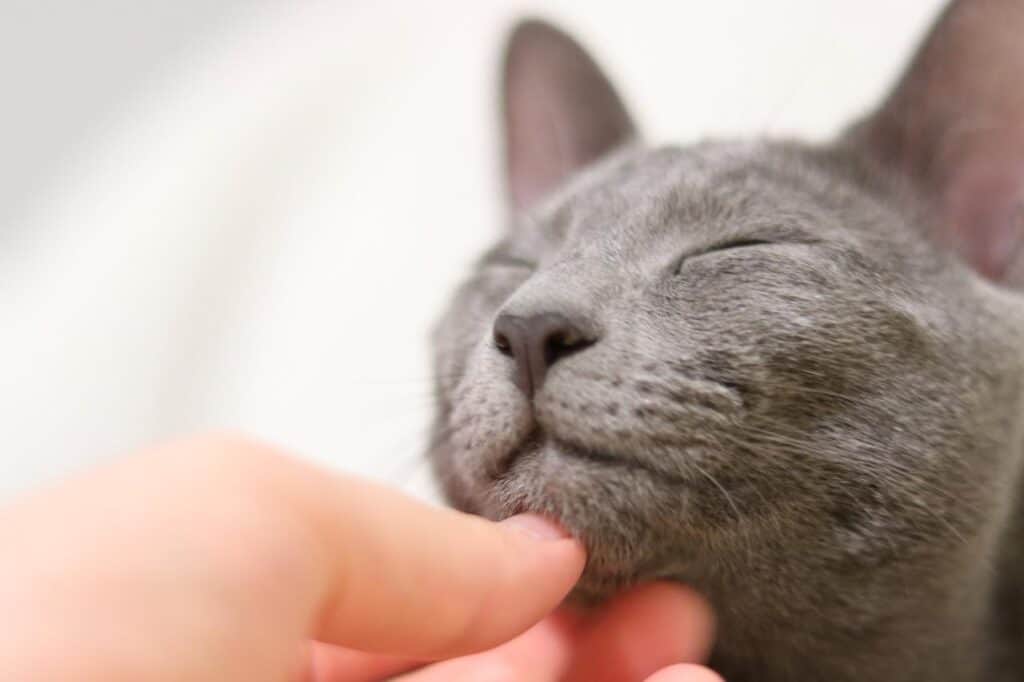
What about seasonal shedding?
You may need to give your cat a little more help with shedding during a seasonal shed. Without proper maintenance, the shedded undercoat can become trapped in the guard hairs, resulting in mats.
To give your cat some assistance with their shedding and keep their coat and skin healthy, it’s recommended to brush them out with a comb or brush.
During a seasonal shed, brushing your cat several times a week (or even every day) will help with the shed, along with removing any hair and preventing mats.
In addition to the benefits to your cat, you and your home can benefit from brushing! Since you’re brushing your cat to remove the fur, you’ll keep stray fur off your furniture and floors, leading to a cleaner home.
Brushing your cat is especially important for those with cat allergies or sensitivities, as this helps control shedding, preventing an excess of fur and dander in the home environment.
What kind of brush should I use?
Since Russian Blue cats have short hair, you don’t need anything super fancy or with longer prongs. A simple slicker brush (as below) works well for double-coated cats, including Russian Blues! Be sure to grab one that’s size and length appropriate for your cat.
Additionally, brushes with steel pins can harm the skin if used too aggressively. Be gentle with your brushing, and be sure not to press into your pet’s skin.
If you encounter resistance from tangles or mats, tease them out slowly and gently to prevent pulling on the skin.
Slicker brushes are usually easy to clean, making maintenance and disposal of excess hair a breeze!
Suggested reading: Are Russian Blue Cats High Maintenance?
Are Russian Blue cats hypoallergenic?
Many people consider Russian Blue cats a good pet for people with cat allergies. It’s important to note that no cat is truly hypoallergenic, but Russian Blues can be a good choice for those with cat allergies.
Why? Most people who are allergic to cats are allergic to a protein shed in dander and saliva: Fel d1. Russian Blue cats shed less of this protein, making them an excellent choice for someone with cat allergies.
Low levels of Fel d1 won’t prevent all reactions, but it can lessen the load of allergic protein in the environment significantly—usually enough for a sensitive person to have a cat!
Additionally, double-coated cats are often more suitable for prospective pet owners with allergies because dander is shed less freely, thanks to the fluffy undercoat.
More information on this: Are Russian Blues Good for Allergic People?
Our Final Thoughts
If you’re looking for a low-maintenance cat for grooming needs, the Russian Blue might be an ideal choice.
Grooming your Blue once a month is sufficient and will keep their coat shiny, soft, and healthy. Although grooming more often is not strictly necessary, your Blue will probably enjoy both the attention and the brushing itself.
You can see your grooming sessions as a way to bond and spend time with your Russian Blue. Just be careful and don’t overdo it. Brush gently and don’t press too hard and risk scratching the skin.
Love cats?
Then you will enjoy our other content as well. Have a look at these popular articles on our website.
-
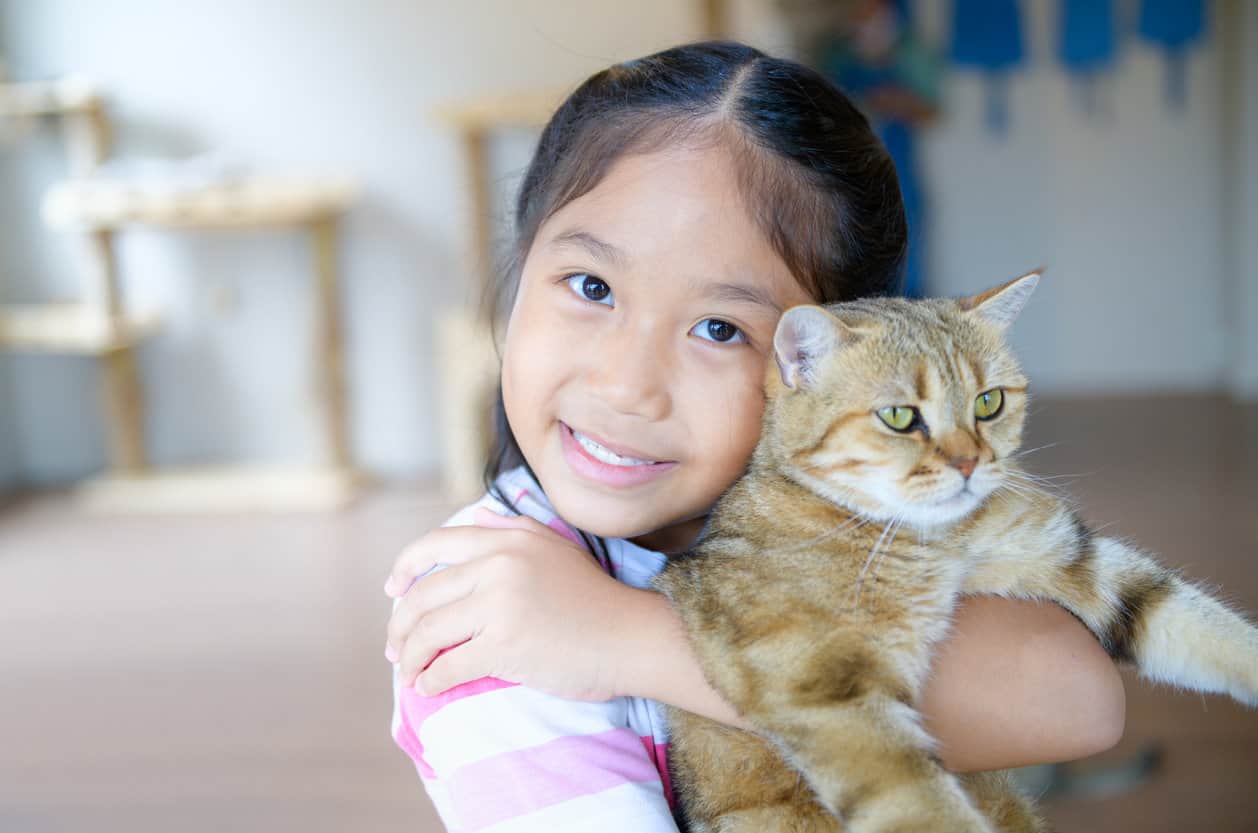
10 Ways to Make Your Cat Live Longer
The oldest cat to ever live passed away at the old age of 38. On average, household cats live between […]
-
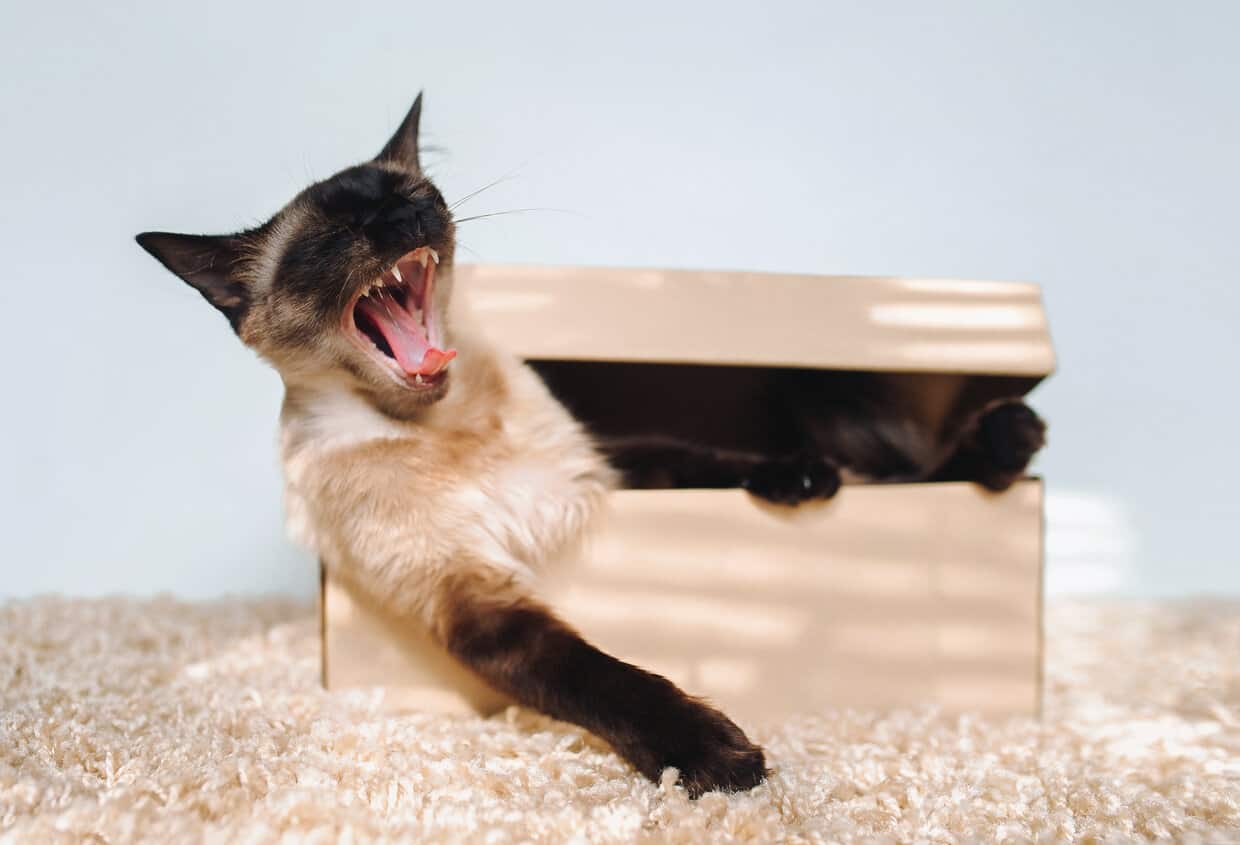
12 Reasons Why Siamese Cats Cry at Night
Siamese cats are a popular breed of cats that many people choose to have as pets. Perhaps you have heard […]
-
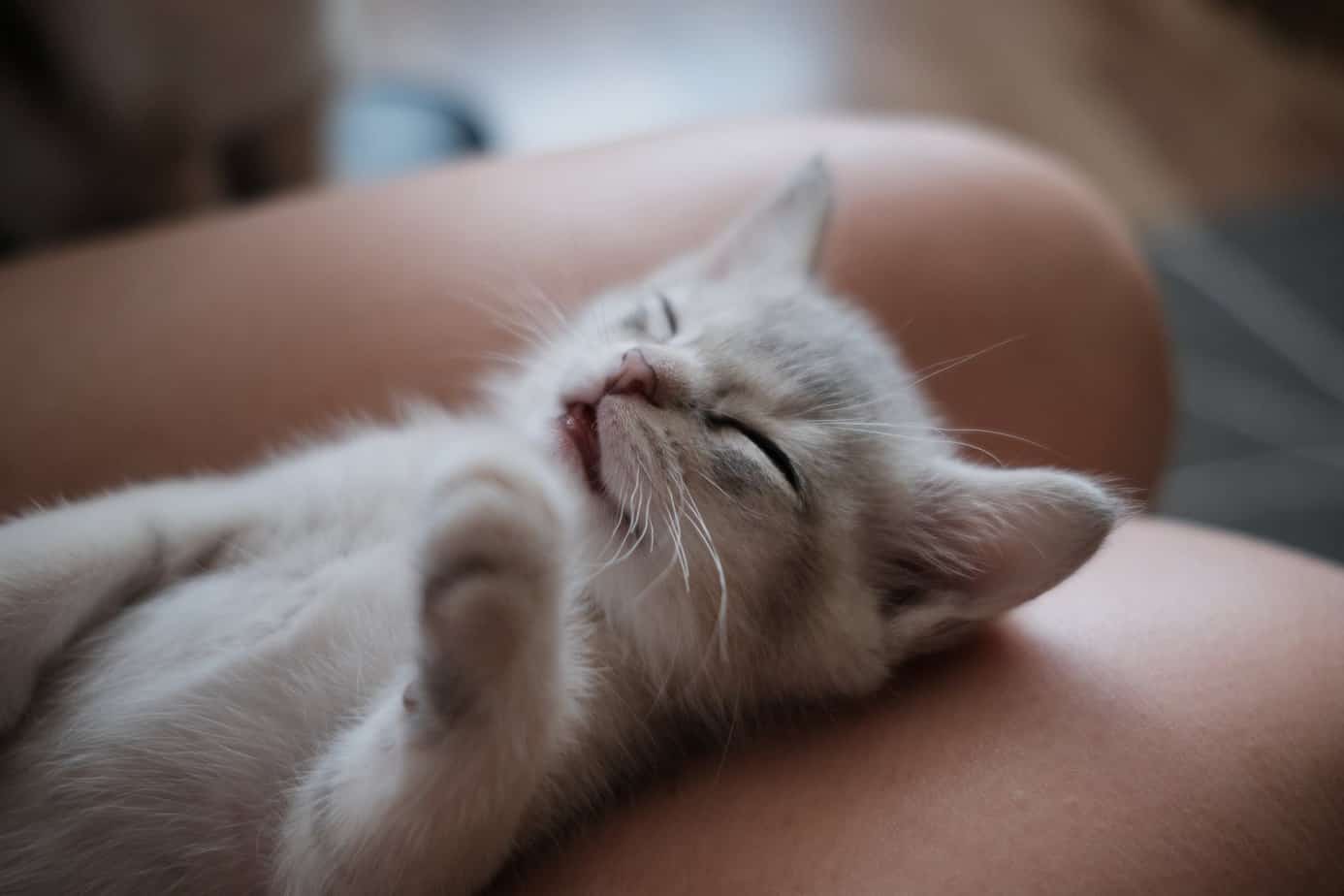
15 Incredible Ways That Cats Show Affection For Humans
Wondering how cats show their affection for humans? We have listed several incredible ways that cats are trying to show their love for us.

